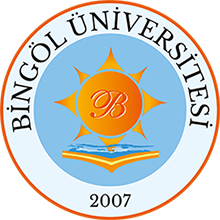12- 14 Yaş Grubu Erkek Hentbolculara Uygulanan 8 Haftalık Pliometrik Antrenmanın Antropometrik, Motorik Özellikler ve Hentbola Özgü Beceriler Üzerine Etkileri
Özet
ÖZET:
Bu çalışmamızda, 12-14 yaş grubunda yer alan ortaokul çağındaki öğrencilere 8 hafta süresince ve haftada 3 gün olacak şekilde pliometrik antrenmanlar yapılarak, seçilmiş antropometrik, motorik özellikler ve hentbol becerileri üzerine gelişimlerinin gözlenmesi amaçlanmıştır. Çalışmanın örneklemi; çalışmamıza kendi istekleri doğrultusunda katılan 8 pliometrik, 8 hentbol ve 8 kontrol grubu olmak üzere toplam 24 öğrenciden oluşturulmuştur. Pliometrik gruba önceden plan dahilinde oluşturulmuş, hentbol antrenmanı ve pliometrik antrenmalar yaptırılmıştır. Hentbol grubuna sadece hentbol antrenmanı yaptırılmıştır. Kontrol grubuna ise hiçbir antrenman yaptırılmamıştır. Çalışma 8 hafta boyunca sürdürülmüştür. Çalışmaya katılan öğrencilere antrenmanların öncesi ön-test sonrasında son-test yapılarak antropometrik uygunluğun ve motorik özelliklerin değerlendirilmesi üzerine (vücut ağırlığı, boy uzunluğu, VKİ, vücut yağ oranı (biceps, triceps, subscapula, suprailiac, baldır) çevre ölçümleri (biceps, triceps, baldır) ve motorik özellikler (dikey sıçrama, bacak kuvveti, sırt kuvveti, esneklik, sağ ve sol el kavrama kuvveti, şınav, mekik ve 20 m hız testi) ölçümleri alınmıştır. Yapılan araştırmadan elde edilen verilerin istatistiksel analizini yapmak için SPSS programı kullanılmıştır. Çıkan sonuçların daha detaylı değerlendirilebilmesi için yüzde, ortalama ve standart sapma vb. tanımlayıcı istatistikler kullanılmıştır. Hentbol, pliometrik ve kontrol gruplarının ön-test ve son-test ölçümleri arasındaki farklılıkları belirlemek için paired samples t-testi ve gruplar arası farkları belirlemek için One-Way ANOVA kullanılmıştır.
Çalışmamızın sonuçları; antropometrik özelliklerde yüzdelik olarak pozitif yönde gelişimler oluşsa da birkaç değişkenin dışında anlamlı farklılıklar tespit edilememiştir. Motorik özellikler yönünden değerlendirme yapıldığında değişkenlerin birçoğunda anlamlı farklılıklar gözlenmiştir. Hentbol beceri değişkenlerinde ise belirgin bir şekilde anlamlı sonuçlar elde edilmiştir. Sonuçları bütün olarak değerlendirdiğimizde; pliometrik antrenmanların motorik özellikler üzerinde pozitif yönde gelişimler sağladığı, hentbol beceri değişkenleri üzerinde de belirgin bir şekilde artış sağladığı tespit edilmiştir. ABSTRACT:
In this study, it was aimed to observe the development of selected anthropometric, motoric characteristics and handball skills by having primary school students in the 12-14 age group perform plyometric training 3 days a week for 8 weeks. The sample of the study; It consisted of a total of 24 students, 8 in plyometric, 8 in handball and 8 in the control group, who participated in our study voluntarily. The plyometric group was formed according to a plan and was given handball training and plyometric training. The handball group was given only handball training. The control group did not receive any training. The study was continued for 8 weeks. The students participating in the study were given a pre-test before the training and then a post-test to evaluate physical fitness and motoric characteristics (body weight, height, BMI, body fat ratio, (biceps, triceps, subscapula, suprailiac, calf)) and circumference measurements (biceps, triceps). , calf) and (vertical jump, leg strength, back strength, flexibility, right and left hand grip strength, push-up, shuttle and 20 m. speed test) measurements were taken. SPSS program was used to make statistical analysis of the data obtained from the research. To evaluate the results in more detail, descriptive statistics such as percentage, mean and standard deviation were used to determine the differences between the pre-test and post-test measurements of the handball, plyometric and control groups, and One-Way ANOVA to determine the differences between the groups. used.
The results of our study; Although there were positive improvements in percentage terms in anthropometric characteristics, no significant differences could be detected except for a few variables. When evaluated in terms of motoric features, significant differences were observed in most of the variables. Significant results were obtained for handball skill variables. When we evaluate the results as a whole; It has been determined that plyometric training provides positive improvements on motor skills and a significant increase in handball skill variables.
Koleksiyonlar

DSpace@BİNGÖL by Bingöl University Institutional Repository is licensed under a Creative Commons Attribution-NonCommercial-NoDerivs 4.0 Unported License..













